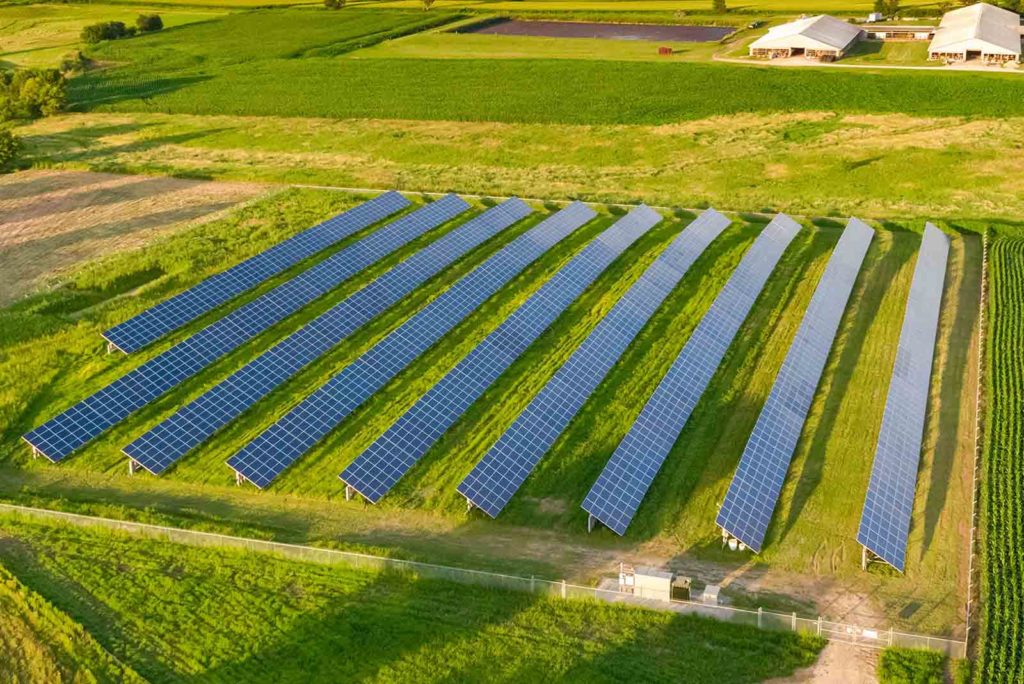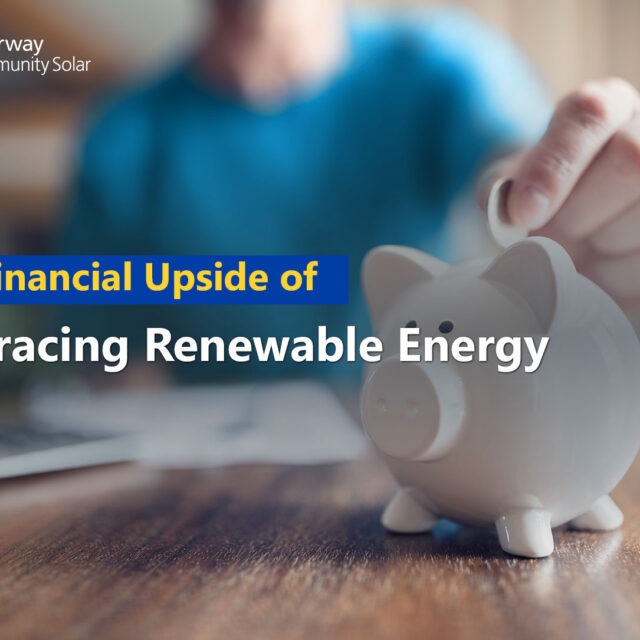
A Guide to the Construction of Clearway Community Solar Farms
Against the familiar landscapes of skylines, neighborhoods, townships, and even local vegetation, a community solar farm quickly catches the eye of those driving by—their rows-upon-rows of aligned solar arrays with photovoltaic panels angled resolutely to reap the sun’s bounty.
For those residents of Massachusetts, Minnesota, or New York, these Community Solar farms, particularly those of Clearway Community Solar, might have already caught your eye. The program is growing rapidly thanks to Clearway Community Solar’s efforts, with new state programs underway, including a program for Illinois, and a vast library of projects in development (not to mention over 70 million kWh of clean power produced to date). One of the largest solar farms in the nation, located in Spencer, Massachusetts, boasts north of 61,000 panels and supplies power for upwards of 1,500 residents across the surrounding countryside.
One of the many advantages of Community Solar is that a residential or business address does not have to undergo the process of installing panels on the property. Clearway Community Solar builds the offsite solar farms and maintains them, creating a more convenient subscription option for solar. How does a community solar farm come to be? The efforts and operations of Clearway Community Solar are thorough and efficient, and the community support of subscribers ultimately makes the farm’s financing viable. Scott Wilson, a Construction Project Manager for Clearway Community Solar offered a description of the process.
Location, location, location
One of the first boxes Clearway Community Solar teams check in establishing a community solar farm is identifying the jurisdictions (such as states) with active solar programs. Drilling down from there, analysts identify local markets possessing favorable economics for a sustainable business model. “The main criteria for a community solar farm are a location where there is a functional solar program, a good market of consumers to buy the power the farm produces, and a market that has good economics,” said Wilson.
With these political and economic abstractions addressed, the next step is a tangible one: site selection. It involves finding available land to build out a farm in appropriate proximity to existing electric power distribution infrastructure. Before the build can begin, company representatives obtain the necessary permits from relevant civic authorities. Based on the site’s specifics, contractors go on to develop and finalize the solar farm project design.
At this point, the planning ends, and it is time for shovels to hit the dirt.
From shovel-ready to operations-ready
As with any construction site, workers must prepare the grounds for both the infrastructure it will host and the construction process itself. Vehicle access must be assured, for instance, while adhering to environmental protection laws and practices.
“The site is cleared of any obstructions that are present, and then if needed the site is graded—meaning moving dirt—to accommodate for drainage, equipment pads, or access roads,” said Wilson. Thus readied, the site is then surveyed to mark locations for the solar arrays. Surveyors also take into account where support infrastructure, including cable trenches and any utility pole locations, will have to go.
Now the build commences. Equipment operators work to excavate trenches while electricians install conduits for power and communication. Another contractor, a racking company, provides piles or screws for the racking support structures. As the racking is getting done, another crew, typically of electricians, installs the solar panels on the racking.
With the power-producing elements of the solar farm locking into place, a chief task then becomes the interlinking of the panels to the existing electricity grid. Solar panels generate direct current (DC) electricity which, as its name implies, only flows in one direction. Electrical grids, however, and the homes and businesses they supply, utilize a different type of current flow, called alternating current (AC), which can change direction.
The DC wiring from the solar panels connects to a device, known as a power inverter, which converts the DC to grid- and appliance-compatible AC. Still more groups of electricians on site integrate all of these components, finally running AC wires to the main switchboard. Once the solar facility is switched on, the switchboard distributes the farm-fresh electricity to downstream areas of usage. En route, the high-voltage AC must also be stepped down to the lower levels ultimately used in homes and businesses. Devices called transformers handle these step-downs.
With the solar farm nearing completion, other items such as fencing and access roads are likewise given finishing touches. A series of inspections then take place and tests are administered to confirm that the farm safely and efficiently produces as intended. “As parts of the system are completed, they are tested to ensure integrity and then everything is connected together,” said Wilson. Finally, the local utility company grants permission to start feeding into the grid. The solar farm is thus officially activated. “After all that,” said Wilson, “the system is complete and is left online to operate.”
Keeping the power flowing
Once operational, solar farms require oversight and maintenance to continue delivering the sun’s renewable energy. According to Wilson, typical maintenance requires washing the solar modules perhaps once a year to remove dust and debris. Several times a year or more, depending on the climate, mowing and vegetation management must be addressed to avoid overgrowth that can cast power-stealing shade onto panels, or threaten damage should a tree limb snap, for instance.
“Larger sites obviously need more attention,” Wilson said, “and may have full-time staff located onsite to address any problems,” whereas smaller sites usually are overseen by one person assigned to a region.
Solar panels and their support equipment are sturdy gear, with most hardware having guaranteed lifetimes of 25 years. Wilson noted that panels can last significantly longer, though, and still usefully produce upwards of 70 percent of their intended output. Should newer, more advanced solar panels or inverters or other equipment become available, farm operators can always opt for a switch. “Pretty much all the components of a system are upgradeable or swappable with newer technology,” said Wilson.
Staying Up to Date on Solar Farm Construction
Depending on when a resident enrolls with Clearway Community Solar, the solar farms may be in varying stages of development. Customers are not billed until their assigned solar farm becomes active, and are regularly kept up to date through email communications and their online customer portal as to the construction milestones. Additionally, customers are sent photos and video of the farm’s development along the way, like our Massachusetts solar farms, which truly capture the tangible effort that every customer is behind.
What the solar farm represents is a community coming together with the common vision of a clean energy future. Thousands of residents are part of a solar farm, and each of them, are at the foundation of this vision.









